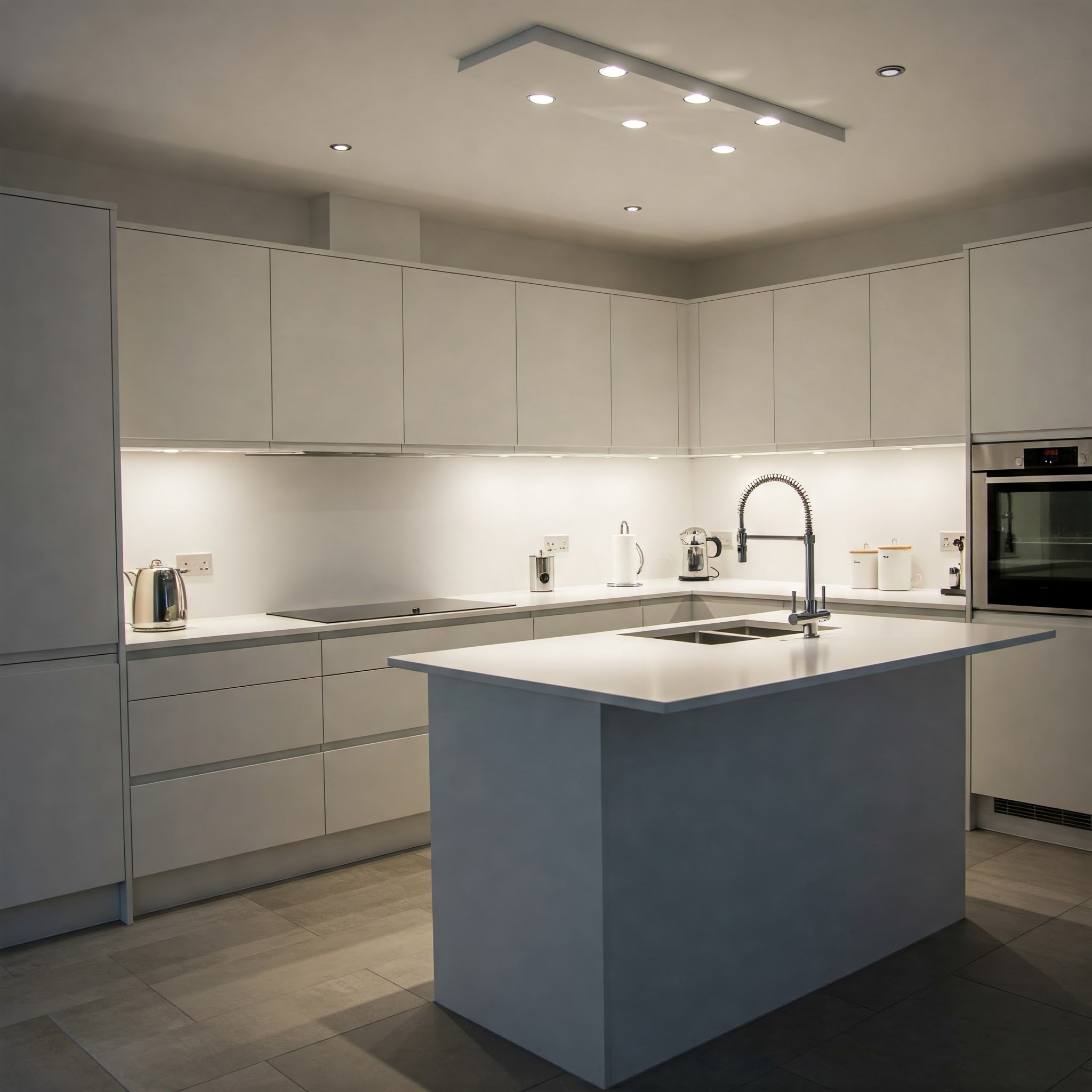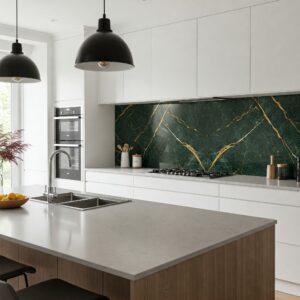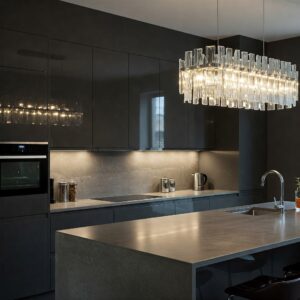Modern bathroom design increasingly emphasizes comfort, luxury, and seamless aesthetics. One feature rapidly gaining popularity and aligning perfectly with these goals is the heated floor. Also known as underfloor heating (UFH) or radiant floor heating, this system gently warms the flooring material itself, banishing the unpleasant shock of cold tiles on bare feet and adding an undeniable touch of spa-like luxury. As technology evolves and wellness becomes a greater focus in home design, heated floors are becoming a defining trend in contemporary bathrooms. This article explores the benefits, system types, and the latest trends surrounding this comforting upgrade.
Why Heated Floors in a Modern Bathroom? (The Appeal & Benefits)
The move towards incorporating heated floors, even in warmer climates like parts of Indonesia where tile is common, stems from several compelling advantages:
- Unparalleled Comfort: This is the primary driver. Stepping out of a warm shower onto a gently heated floor is a simple luxury that significantly enhances the daily bathroom experience.
- Energy Efficiency (Potentially): Radiant heat warms objects and people directly from the floor up, providing a comfortable feeling at potentially lower air temperatures compared to forced-air systems heating just the air. When zoned correctly for just the bathroom, it can be an efficient way to provide targeted warmth where needed.
- Design Freedom & Aesthetics: Underfloor heating is completely invisible. It eliminates the need for bulky radiators or visible heating vents, allowing for cleaner lines, more flexible furniture placement, and a minimalist aesthetic that aligns perfectly with modern design.
- Even Heat Distribution: Heat radiates evenly across the entire floor surface, eliminating the cold spots often associated with other heating methods.
- Quiet Operation: Radiant floor systems operate silently, contributing to a peaceful and serene bathroom environment.
- Can Help Dry Floors: The gentle warmth helps evaporate moisture from the floor surface more quickly after showering, potentially reducing slip hazards and contributing to a cleaner feel (though good ventilation remains crucial).
- Increased Home Value: Heated bathroom floors are increasingly seen as a desirable luxury feature, potentially adding to a home’s resale value.
Types of Heated Floor Systems for Bathrooms
Two main types of underfloor heating systems are used:
- Electric Underfloor Heating:
- How it Works: Consists of electric heating cables, mats (cables pre-spaced on mesh), or heat films installed directly beneath the floor covering. Electricity flows through these elements, generating heat.
- Pros: Generally easier and less expensive to install, especially for single rooms or renovations; thin profile adds minimal floor height; heats up relatively quickly.
- Cons: Higher running costs due to electricity prices compared to hydronic systems linked to efficient boilers. Primarily suited for heating specific zones or smaller areas like bathrooms.
- Prevalence: This is the most common type installed specifically for bathroom renovations or individual room heating due to ease of installation.
- Hydronic Underfloor Heating:
- How it Works: A network of flexible tubes is installed within or beneath the subfloor. Heated water (or a water/glycol mix) from a boiler, heat pump, or water heater circulates through these tubes, warming the floor above.
- Pros: Lower running costs, especially if connected to an efficient central heating source; suitable for heating large areas or entire homes.
- Cons: Higher initial installation cost and complexity; system is thicker, potentially raising floor height significantly; slower to heat up and cool down compared to electric systems.
- Prevalence: Less common for just a single bathroom remodel unless it’s part of a larger home heating system upgrade or new build.
Heated Floor Trends in Modern Bathrooms (as of April 2025)
The implementation of heated floors is becoming more sophisticated:
- Smart Home Integration: Connecting heated floor systems to smart home platforms via Wi-Fi enabled smart thermostats is a major trend. This allows homeowners to control temperatures, set schedules, and monitor energy usage remotely via smartphone apps or voice assistants (like Alexa or Google Assistant).
- Advanced Programmable Thermostats: Even without full smart home integration, dedicated programmable thermostats allow users to set detailed heating schedules – warming the floor before morning routines and reducing heat during unused periods – optimizing comfort and energy efficiency.
- Compatibility with Modern Flooring: While tile and natural stone remain excellent choices due to their thermal conductivity, manufacturers are increasingly offering electric UFH systems compatible with luxury vinyl tile (LVT), engineered wood, and even specific laminates (always check manufacturer compatibility and recommendations).
- Targeted Zoning: Using heated floors specifically for the bathroom zone, controlled independently from the rest of the home’s heating system, for targeted comfort and efficiency.
- Synergy with Wet Rooms & Curbless Showers: Heated floors are particularly beneficial in open-plan wet rooms or bathrooms with curbless showers, enhancing comfort across the larger tiled area and aiding in quicker drying of the entire floor space.
- Focus on Wellness & Comfort: Heated floors are increasingly viewed as part of a broader home wellness trend, contributing to a more comfortable, spa-like, and luxurious personal environment.
Key Considerations for Installing Heated Floors
- Flooring Compatibility: This is crucial. Ceramic tile, porcelain tile, and natural stone are ideal conductors. Luxury Vinyl Tile (LVT) and engineered wood often require specific types of UFH systems and have temperature limitations. Solid hardwood is generally not recommended due to expansion/contraction issues. Always verify compatibility with both the heating system and flooring manufacturers.
- Professional Installation: While some electric mat kits are marketed for DIY, professional installation by a qualified electrician (for electric systems) or heating engineer (for hydronic systems) is highly recommended to ensure safety, proper function, and integration with waterproofing.
- Floor Height Increase: UFH systems add some height to the floor assembly (from thin electric mats adding ~1/8 inch to thicker hydronic systems). This needs to be factored into planning, especially regarding transitions to adjacent rooms and door clearances.
- Cost: Factor in the cost of the system itself (mats/cables/tubes, thermostat), professional installation labor, and potential adjustments to the subfloor. Also consider the ongoing running costs based on local utility prices.
- Thermostat Choice: Invest in a programmable or smart thermostat designed specifically for floor heating to maximize control and efficiency.
- Repair Access: Although modern systems are generally very reliable, repairs can be complex and costly as they involve accessing components beneath the finished floor. Proper installation minimizes this risk.
Conclusion
Heated floors have transitioned from a niche luxury to a popular and desirable trend in modern bathroom design. Offering unparalleled comfort underfoot, enhancing the clean aesthetic by eliminating visible radiators, and potentially improving energy efficiency through radiant heat, underfloor heating significantly elevates the bathroom experience. With advancements in smart controls and increasing compatibility with various flooring types, adding the simple luxury of a warm floor is becoming an increasingly accessible and sought-after feature for homeowners seeking a truly comfortable and contemporary bathroom retreat. Careful planning and professional installation are key to maximizing the benefits of this comforting technology.







Leave a Comment